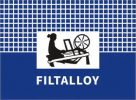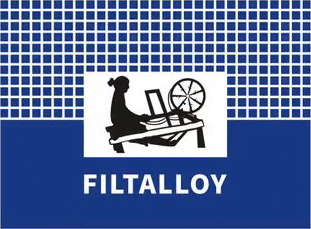Introduction of Titanium Sintered Fiber Felt
The titanium fiber is sintered in vacuum sintering equipment, outside with coarse fibers and inside with fine fibers. It’s a staggered arrangement with a honeycomb porous structure. With the special structure and performance, it’s widely used in Filtration, catalysis, battery electrodes and other fields.
The high specific surface area of titanium felt provides larger surface area for chemical reaction or adsorption process, which is beneficial to the exchange and reaction of substances. It is usually used in high temperature, corrosion resistance and high strength applications. Yet it should avoid contact with fluorides. For example, hydrofluoric acid will corrode titanium.
The Characteristics of Titanium Sintered Fiber Felt
1. High Porosity and Controllable Pore Size
- High porosity (usually 60%~90%): forming a three-dimensional mesh structure that allows fluid or gas to pass efficiently.
- Adjustable pore size: By adjusting the fiber diameter and sintering process, sintered felts with different pore sizes can be prepared to meet different filtration accuracy requirements. Its pore size distribution is uniform, which can achieve high-precision filtration and effectively intercept particles of different particle sizes.
2. Excellent Thermal Stability
- High temperature resistance: Titanium has a high melting point of about 1668℃. Titanium sintered felt can work for a long time at high temperature of less than 400℃.
- Better oxidation resistance than most metal fiber felts
- Low thermal expansion coefficient: Good dimensional stability at high temperature and not easy to deform.
3. Corrosion Resistance
- Anti-chemical corrosion: The titanium surface is easy to form a dense oxide film TiO2, which is resistant to acid, alkali, salt and organic solvent corrosion, except strong reducing acids such as hydrofluoric acid and concentrated sulfuric acid. It is suitable for harsh chemical environments, such as chemical industry and marine fields.
4. Mechanical properties
- High strength and flexibility: After sintering, titanium fiber felt maintains a certain strength and flexibility. It can be processed into complex shapes, such as pleats and cartridges. Even if it is strongly washed by liquid or strongly vibrated, the fiber is not easy to fall off.
- Impact and fatigue resistance: It is more resistant to mechanical vibration and pressure fluctuations than ceramic porous materials.
5. Good Permeability and Low Resistance
Titanium sintered felt has a special three-dimensional pore structure. So the pressure loss is small. The flow rate is large and the through-pore structure significantly reduces the fluid resistance. It is suitable for high-flow filtration or diffusion applications.
6. Biocompatibility
Titanium is non-toxic and compatible with human tissues, and is suitable for biomedical fields such as implant materials, blood filtration.
7. Conductivity and Low Weight
- Conductivity: Titanium sintered felt has strong conductivity and can be used for battery electrodes or heat exchange components.
- Low Weight: Titanium has a low density (about 4.5 g/cm³) and light weight, which can reduce the weight of the electrolyzer. It can be integrated with other titanium components by welding.
Application
- Filtration: chemical corrosive medium filtration.
- Electrochemistry: fuel cell diffusion layer, water electrolysis electrode.
- Environmental protection: sewage treatment, gas purification catalytic carrier.


